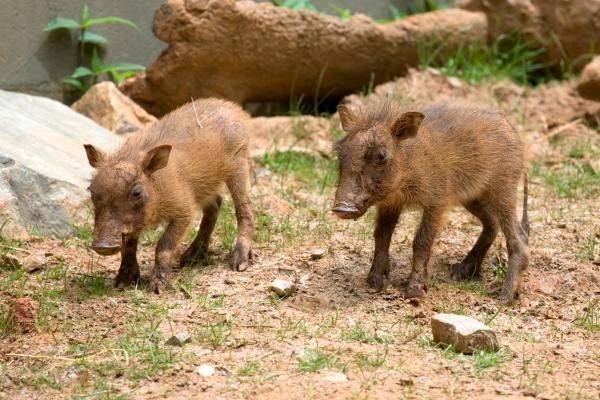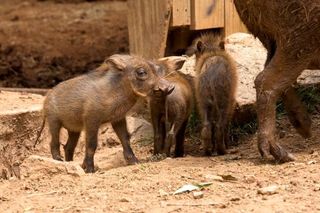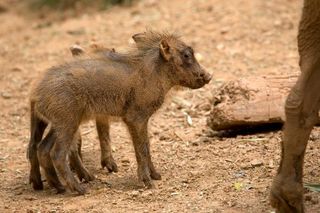
Wittle Warthogs: New Piglets Born at Zoo Atlanta

Nothing says spring like a fresh batch of warthog piglets. At least that's how it is at Zoo Atlanta, where the latest litter has been active enough lately for the zoo to snap pictures of them.
The zoo's predictably pregnant pig, Shirley, gave birth to her largest litter, six mud-colored piglets, on March 29. Sadly, three piglets didn't make it, which is tragically common for fragile newborn warthogs. The zoo's animal and veterinary teams are closely monitoring the surviving three piglets, two girls and a boy.
Warthogs are sexually mature at 18 to 24 months, but males usually do not mate until they are about 4 years old. Warthog mating occurs at the end of the rainy season, then after a 175-day gestation period, one to eight (usually two to three) young are born in the dry season.
Piglets nurse for several months and are completely weaned by 21 weeks of age. Female warthogs have only four teats, and piglets often have their own assigned teat that they suckle exclusively until weaned.

The young are temporarily driven away when a new litter is on the way, but they may rejoin the family later. Males separate from their mothers by the age of 15 months. Females stay longer, sometimes permanently.
Shirley, 4 years old, and her kids will bond behind-the-scenes for about two weeks before meeting the daddy, Vern, also 4.
The piglets don't look like much now, but they'll eventually grow to 2 to 3 feet (0.6 to 1 meter) long, and weigh up to 250 pounds (113 kilograms).
Sign up for the Live Science daily newsletter now
Get the world’s most fascinating discoveries delivered straight to your inbox.
The piglets are soon expected to begin exploring their exhibit in the Zoo's African Plains.

Warthogs are not a protected species, but many populations are in serious decline due to overhunting in unprotected areas. Farmers will also exterminate warthogs because they are symptomless carriers of swine fever, a disease endemic to Africa that is fatal to domestic pigs.












